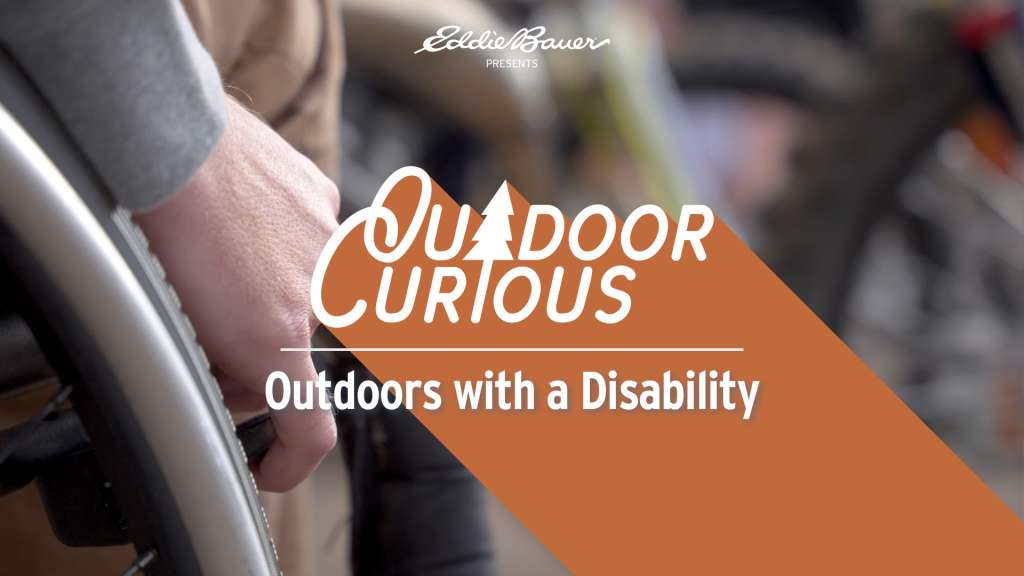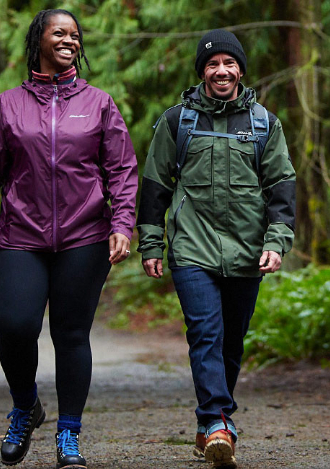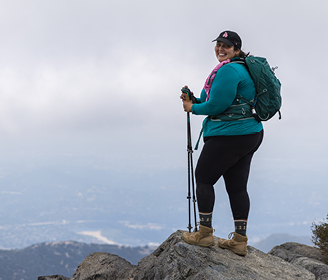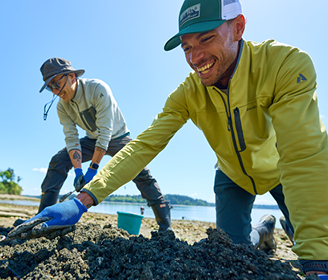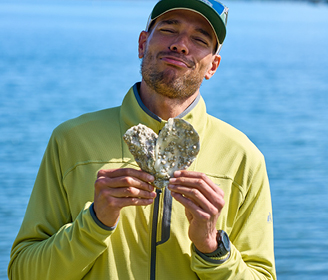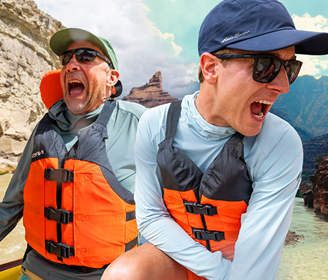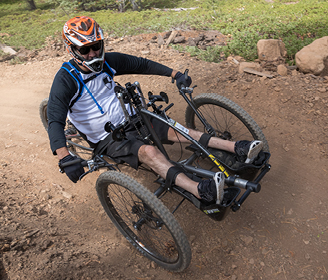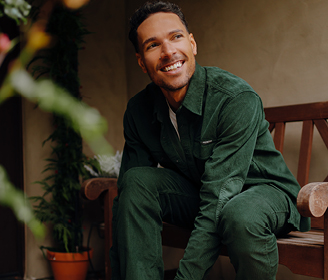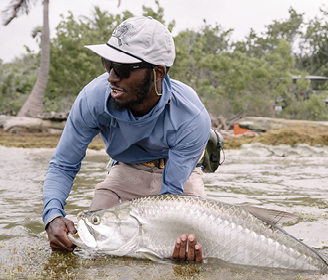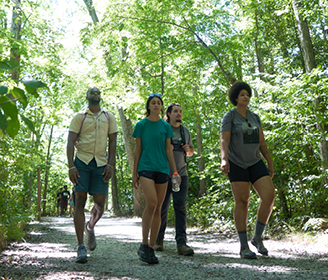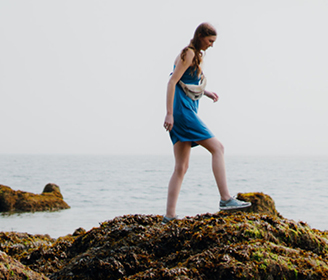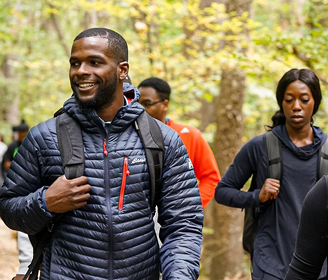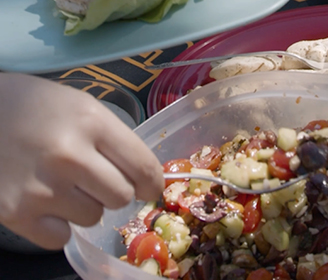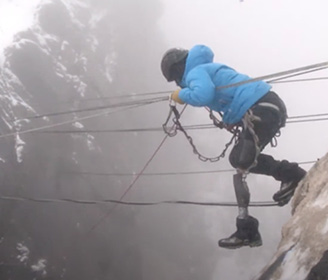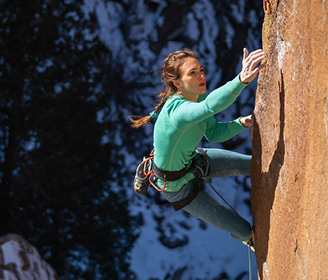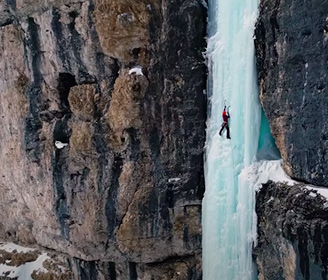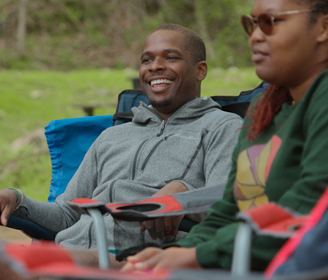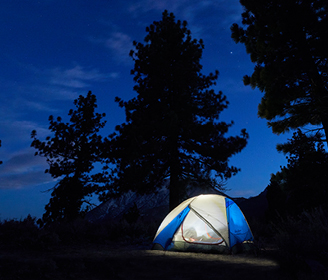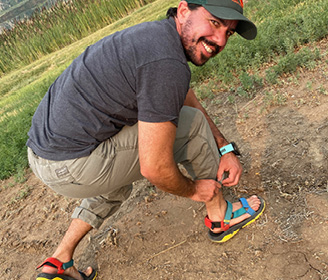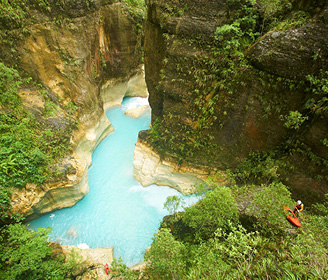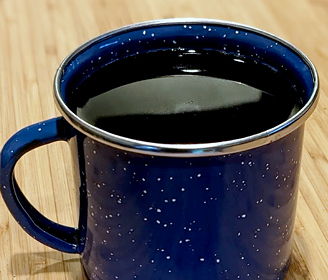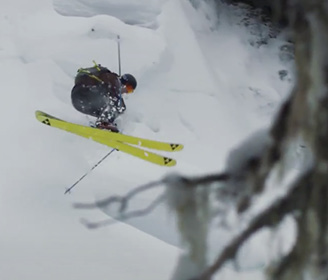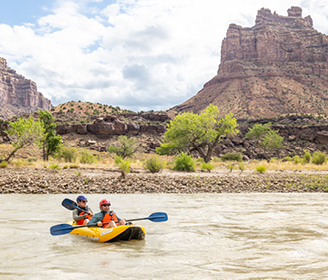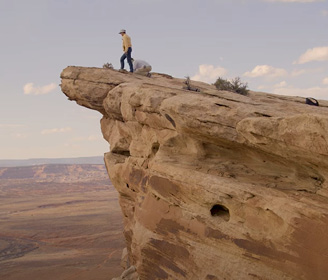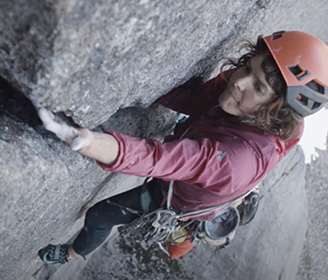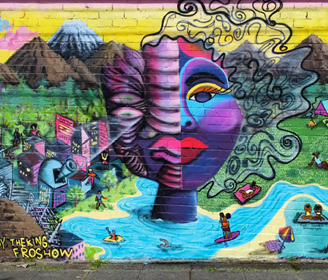Ever wonder what the second largest sporting event in the world is? High Fives Foundation founder and Eddie Bauer One Outside Leader Roy Tuscany is here to answer your top questions about experiencing the outdoors as a person with a disability. Footage in this episode provided by High Fives Foundation.
00:30 – What are some resources for getting outside for people with disabilities?
Find a local adaptive sports center. Here in Lake Tahoe, where we’re located. That program is called Achieve Tahoe, where I’m from in Vermont, that program’s called Vermont Adaptive and adaptive sports center is hands down the best place that you could go.
00:49 – What are adaptive sports?
Well, they’re just sports but they’re done with adaption, for an example, myself skiing, I use poles with skis on the end or it’s called four tracking. Other individuals in skiing use bi skis or mono skis or other types of adaptations to allow them to experience the sport in a way that it’s still just the sport.
01:11 – What pillars of adaptive sports does High Fives Foundation support?
We focus on motorsport, we focus on skiing and snowboarding, surfing, mountain biking, and then also fly fishing.
How has gear evolved to help people get outside with disabilities?
I think one of the biggest things that we’re seeing in mono skis and adaptive bikes and other types of equipment is the increase to suspension in the way that dampening and rebounding can be put forth not only in bikes, in sit skis as well. But what you’re seeing is the suspension is allowing for the rebound to not be violent. And it’s also allowing for individuals to explore beyond what was ever possible. Take for example, Eddie Bauer athlete, Trevor Kennison. Trevor dropped his sit ski into Corbet’s couloir. 15 years ago the technology was not there. These devices are basically acting as our own legs. You drop a cliff on your skis your legs are gonna be the one that absorb, while in a sit ski, that suspension, that bucket has got to be able to do the rebound and the dumping and that is a big thing that has been advanced in the last 10 to 15 years in the equipment.
02:23 – What are the types of adaptive skiing?
There’s many, but let’s first define the ways that someone might use it. So Adaptive Nordic is gonna be mostly in a sitting or a kneeling position using traditional Nordic poles but you’re gonna be pushing yourself along either seated or kneeling so that’s Adaptive Nordic. Adaptive skiing in the Alpine sense, there’s really three buckets that you can look at. You can look at a bi ski, which is a bucket on top of two skis that has independent articulating suspension to allow the two skis to operate. The other is mono skiing, very traditional, what you see majority of the time one ski on top of a bucket. Then there’s four tracking and three tracking, individuals with lower extremity mobility issues that still have the strength like myself to be able to stand but don’t have the balance or the core to be able to ski as an able body, it’s called four tracking. So when I ski, I have normal skis, normal bindings normal boots, but my poles are specially made with skis on the end of it allows me to initiate my turn and it also allows me to start and to stop on the hill safely. In three tracking, same exact thing but it’s usually done by an individual that amputation or limb loss that individual will use two of those poles like myself, and then have one leg. There’s all the different types of adaptations in skiing to get an individual, the disability back out into a sport they love and sliding on snow.
03:54 – Who is the first person ever to back flip a sit ski?
Josh Dueck, it was actually how highlighted in a Salomon Freeski TV episode back in 2000 I think 12, Josh documented the first ever back flip in a sit ski. And since then that feat has been done by many others but the first person ever to land a back flip in a sit ski is Josh Dueck of Canada.
04:18 – Where does adventure planning start?
I think adventure planning really starts at the core of what is your passion. For me, I’m first gonna define the sport that I wanna do. And then once I define the sport, and then I’m gonna look at the location that I’m gonna go to and the location that I’m going to is gonna then determine how I’m gonna start planning for the trip. Is it gonna be something that I’m flying to? Is it something that I’m gonna travel to? How am I gonna get my gear there? I always think it’s good to bring a friend that really stoked about what you’re doing, wants to see you accomplish this. They’re not only a cheerleader, but they’re also pretty much gonna help you get around as well. So an able body friend is also really good.
05:00 – How can we all make the outdoors more accessible?
Oh, this is such an awesome question. If more and more people would lead with curiosity instead of accusation the outdoors would become so much more accessible to all just from a visual standpoint. And what I mean by that is instead of questioning when you see something that looks out of the norm in an area where you usually see, my example is an e-bike. I use an e-bike because my lower extremities don’t work that well. I have lost extremity usage from my spinal cord injury, ’cause of that, I have to use something that generates additional power to get me up the hill. And a lot of times people question without even asking why, they just accuse me of being lazy because I use an e-bike, but usually when people lead with curiosity, it’s a whole different outtake and it usually ends with not being lazy but them being inspired by seeing an individual like myself with a disability, getting out. And then there’s a lot of other steps that we can do beyond that universal design, universal trail design and taking disabilities into the forefront of when planning trips, I mean, when planning trails. On this past summer at Sky Tavern here in Nevada, we built a four mile downhill flow trail for mountain bikes. And we built it first, with adapted bikes as the consideration for this trail but the trail was created so that it was usable for all.
06:20 – I was never really outdoorsy before my spinal cord injury. Can I get into adaptive sport and how?
Yes, totally, maybe even your life changing injury, this spinal cord injury is, is actually gonna fuel the fire for you to have a new passion. And what I always tell to folks when they have these life changing injuries is how can we find the positive out of the negative, you might even get into it more than you ever expected because you’re gonna meet a community that way. You’re also gonna find that, sport is a byproduct of community. So if you all of a sudden start getting into a sport maybe it’s adaptive mountain biking. Well now you’re gonna have friends that are able body and adaptive mountain bikers that you can go out on the trails with and you’ll watch your community will start to grow.
07:01 – Can I use the motorized wheelchair on public lands trails even when no motorized vehicles are allowed?
Yes you can. Because your motorized wheelchair is made specifically for individuals with disabilities as long as I believe it is no longer wide than 38 inches. Now, if it was a segue, which is not made specifically for individuals, it is made for mainstream that means that that right there does not qualify itself for that type of exemption. Go check out an individual by the name Quinn Brett. She’s on Instagram, she works for the national parks, she has a spinal cord injury. She knows more about trails, trails rights and everything. If you want a great explanation of this go look up Quinn Brett.
07:46 – What are some barriers to the outdoors that people without disabilities might not recognize?
You know, I think the biggest thing is to never assume that you understand whatever the trail ahead may be like for the person with a disability. If it’s hiking, if it’s mountain biking, if it’s climbing if it’s skiing or snowboarding, never assume that what you are about to say to them, oh, it’s super easy, don’t worry about it, I do it all the time, that’s great. Unfortunately, this person might not have done it all the time and they might also be new to the sport. So the best thing to do I think in this one is again, go back to curiosity here. Hey, what do you think about going down this trail? How could we best do it and how could I best assist you? Should I go first? Should I go second? Do you want some assistance here? Is there any ways I can be a second eye for you? Walking is not really my strong point. I can walk, I walk with a bit of a limp, but taking on trails and hiking is something that I only do if I completely understand the trail system. The best thing that you can do is provide as much support and curiosity into how to get that person through that trail. If it’s skiing, riding, hiking, climbing whatever it may be, but never assume that you understand what that’s gonna look like, I think that’s the biggest takeaway.
09:06 – Layering tips for people with disabilities?
Folks with disabilities especially spinal cord injuries, one of the biggest takeaways that a lot of people don’t understand is that blood circulation doesn’t happen below the level of injury for a lot of folks. So that means with no blood flow, you’re not recycling blood and keeping your body temperature up. So one of the most important things that you can do is keeping your core warm and keeping your insulated body heated. Here is my tip. Go through the Eddie Bauer catalog and look at the way that they focus on layering. Ever since becoming an Eddie Bauer community leader, I’ve never understood the importance of layering more than I do now. So for me, when I go skiing I wear a Merino wool top and bottom, then I wear an Eddie Bauer top and an Eddie Bauer set of tights below that. And then I wear traditional bibs, one of these, nice little puff jacket and then a nice waterproof jacket on top. That to me, keeps my core warm and keeps my body temperature up.
10:03 – Who was the first person with a disability to summit Mount Everest.
The first person ever with a disability to climb Mount Everest was Tom Whittaker.
10:14 – Tips for families who want to experience the outdoors together.
Finding that adaptive sports center in your area. I’m gonna keep telling you about Vermont Adaptive in Vermont. They just open up a brand new facility and they offer year round programming and they make it so that it is seamless for your family to come on an adventure to the matter of valley and not feel like individual that disability can’t participate in a sport or an activity because they’re gonna help or provide a solution to it.
10:42 – What is the second largest sporting event in the world?
That’s a good question. Second largest sporting event falls behind obviously the first largest sporting event. First largest sporting event in the world is the Olympics. Second largest sporting of event in the world is the Paralympics which have up exactly a month later in the same host city in the same nation, check out the Paralympics, they’re incredible. Some of the coolest things happening this year will be coming from Beijing, China 30 days after the Olympics, winter Paralympics happening. And we have a really great team from the USA.
11:13 – How can we help to normalize adaptive sports?
I’m just gonna to use Eddie Bauer’s athlete Trevor Kennison for example, Trevor has transcended the sport in his sit ski. And I would say he’s probably one of the most popular skiers in the entire world. You know with Trevor it’s his innovation, it’s his firsts of doing many things in a sit ski that keep people so excited but really it’s that when you see him on the hill if you didn’t actually see the piece of equipment you would have no idea the way that he takes on the hill in any type of way, that is different from any other person participating in that sport. So I think the biggest way to normalize adaptive sports is to stop thinking that every single time that you see a person doing it’s inspiring or going up to him being like, oh my God you just made my day because seeing you out here just made me realize my life’s not that tough. It’s not really the best thing you can do. Better conversation way of being like, wow I just saw you shred the most epic turn in that thing, how did you that? Just like you would ask a normal person I just saw you crush the best powder turn ever. How did that feel? Those are the ways that we can start to normalize when you stop talking about the disability first, and you talk about what is making you excited about that person. I think that’s something we do really well at High Fives. An athlete is anybody with a goal. And that is something that we all can contest to able or adaptive that we all have goals within sport.
12:37 – Who are some adaptive athletes to follow on social media, to gain some insight into adaptive sport?
Trevor Kennison is definitely one. Another guy I love to follow Evan Strong, he’s a below knee amputee on the us Paris snowboard team. My wife Alana Nichols, first ever female or actually first ever person in the world to have gold medals in the summer in the winter game, you got ’em in basketball in 2008 and then winter skiing in 2010. And then another one I talked about her a couple times is Quinn Brett. Quinn is a huge advocate for the trail service and our parks. The guy I’ll tell everyone to watch Andrew Kurka, sit skier for team USA, he is headed to Beijing with the first ever Toyota developed sit ski. So it’s gonna be fun to watch little recap, Trevor Kennison, Evan Strong, Alana Nichols, Quinn Brett and Andrew Kurka, those are the five people I would encourage people to check out and there’s hundreds of folks out there.
13:34 – How many categories of Paraclimbing are there?
I have no clue, but I do know the number of categories that exist in Parasurfing. There are nine there are nine total categories in Parasurfing, nine different divisions that all work at different ways of classifying their disability to make sure that folks are competing within their classification and that their disability doesn’t have to be handicapped and that they can just participate in sport in a normalized way.
14:05 – What are the different types of adaptive bicycle options and how do I choose one?
What type of riding do you wanna do? Do you wanna ride bikes on the road, on trails, on dirt? Do you wanna try to ride bikes that hit jumps or drop cliffs? All those different things will play into factor into what type of bike you want. I think right now the bike that is getting the most attention is a bowhead which is an electric driven mountain bike. So it’s really good to go to an adaptive sports center try out all the different ones, try out road bikes try out mountain bikes, try out all the different pieces of adaptive equipment, whatever creates joy for you will create the best opportunity and the best experience on that bike for you.
14:43 – What is something I can do today to be an assistance to adaptive riders?
Be curious, never do anything without asking for permission first. So if you’re gonna help someone make sure they know what you’re about to do unless it’s some type of an emergency where you think this person’s gonna go off and they’re gonna end up off a cliff, just grab onto the bike and go, that’s one of those exceptions but majority of the time communicate, how can I help you? How can I assist you? I think those are really important questions to ask, because if you go in like that, you’re being curious and you’re not at any time assuming that you know the answer you don’t understand their disability like they do but they can easily provide the feedback to you so that you can understand their disability.
15:30 – What are some High Fives events I can come participate in?
Well, we got some really great thoughts that Eddie Bauer is a sponsor of, coming up in 2022, our first one is March 6th, the Fat Ski-A-Thon at Sugarbush, Vermont. Then our Mothership Classic happens on March 27th at Palisades Tahoe. And then on April 16th, we’ll be heading to Winter Park for our Retro Shred-A-Thon, check our website, check our social media and hopefully get to see you at one of our upcoming events in the near future.
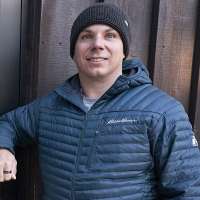
ROY TUSCANY
Eddie Bauer One Outside Guide
Roy is an avid skier, mountain biker, and father. He’s also the founder and CEO of High Fives Foundation (HFF), a nonprofit organization that helps athletes recover from life-changing injuries and return to the sports they love. It’s something Roy knows a lot about: In 2006, he suffered a devastating spinal cord injury while skiing that left his lower body paralyzed. Instead of realizing his dream of becoming a world-class pro skier, he had to relearn how to walk. But two years later, he was able to step into skis equipped with outriggers.

